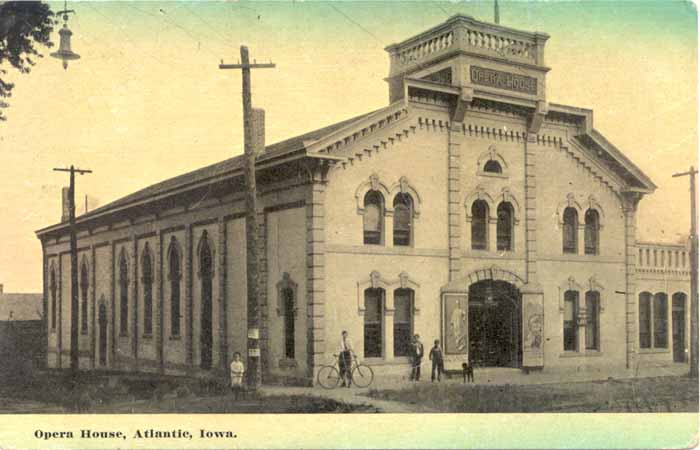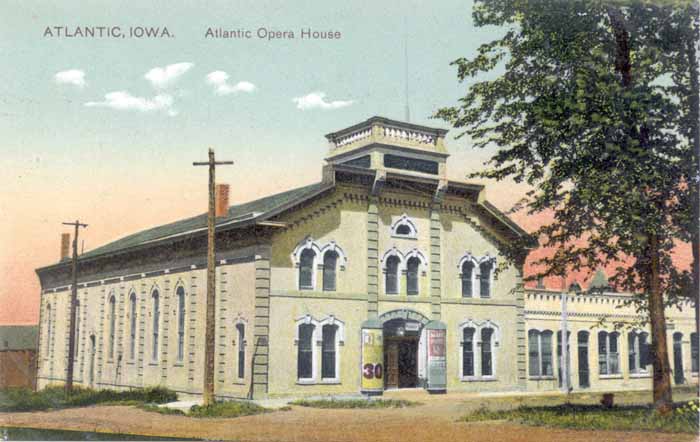History - Opera Houses
Atlantic Opera House

1. Bacon Opera House (also called The Opera House or The Atlantic Opera House), built in 1880 by H. E. Bacon in association with A. A. Hubbard and A. E. Stevens, managed by H. E. Bacon (1883-1886), seating capacity 600;
2. Whitney's Hall, ca. 1883, managed by F. H. Whitney;
3. Academy of Music, ca. 1889, managed by R. H. Bigler or R. H. Bailey, seating 250;
4. (Atlantic) Opera House, ca. 1889, seating 500 on the main floor and 200 in the balcony; and
5. Atlanta, also known as Atlantic Opera House ca. 1896, managed by Lester L. Tilden (1896), C. P. Hubbard (1901-1909), W. P. Frost (1914-19??) and Fred Herbert (1921), seating capacity 528.
Glenn and Poole cite conflicting information regarding current usage of Bacon Opera House, "Some say it was torn down. Some say it currently is a movie theatre." The "History of Atlantic 1888-1968" published by the Chamber of Commerce for the Atlantic Centennial indicates that the Bacon Opera House building is the one occupied by the Atlantic Theatre in recent years.

Sources:
History of Atlantic, Iowa 1868-1968, published by the Atlantic Chamber of Commerce, April, 1968, pp. 44-45.The Opera Houses of Iowa, by George D. Glenn and Richard L. Poole, Iowa State University Press, Ames, Iowa, 1993.
First (top) postcard contributed by Cheryl Siebrass, October, 2009. Second postcard is postally ununused,contributed by Cheryl Siebrass, May, 2010.
Copyright © 1996
The IAGenWeb Project
IAGenWeb Terms, Conditions
& Disclaimer

